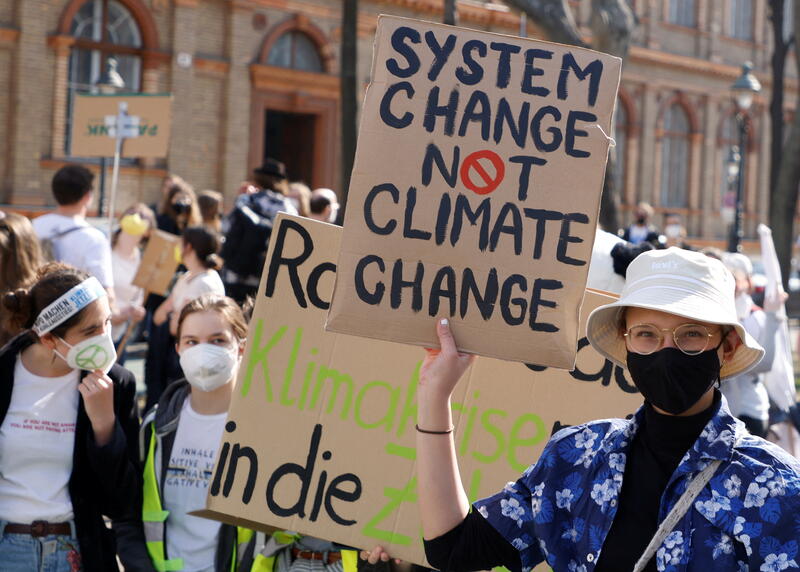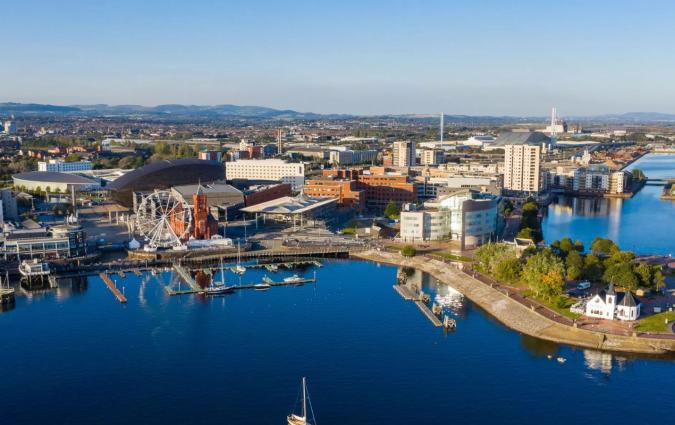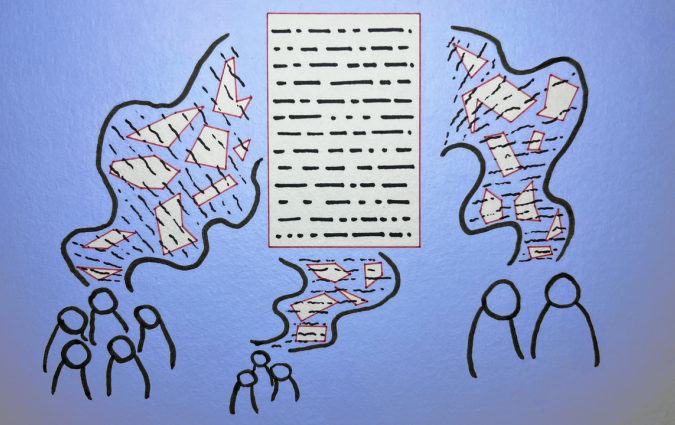To cover climate change well, journalists must be prepared to identify what misinformation looks like

A Fridays for Future activists protest, in Vienna, Austria in March 2022. Credit: Leonhard Foeger/Reuters
This past February, Daniel Caspary, the chairman of Germany’s governing party in the European Parliament, laid out his logic for pushing against a proposed Europe-wide ban on internal combustion vehicles by 2035.
“We want to and must achieve the climate targets of 1.5 degrees,” he said in an interview with Deutschlandfunk, “but we think it would be wrong to back just one horse . . . We assume that the engineers we have in Germany and Europe and around the world are so intelligent that they might develop solutions tomorrow that we don’t even know exist today.”
It was a vital lesson in my work as a climate journalist for the Austrian broadcaster ORF. It’s important for reporters to know not just what modern climate misinformation and disinformation looks like, but to understand and cover who is behind it, and why.
The reality is that though outright climate denial still happens, it is becoming more rare. More common now is climate “delay”: the argument that governments and companies should address climate change later, or claims that the economic cost of addressing climate change is too large. Scientists have disproven both these statements. But combating them is often difficult for journalists.
This is partly because journalists now often need extensive knowledge to debunk greenwashing PR. Caspary’s statement sounded innocuous, even sensible. But the reality is that we have clear information that focusing on e-fuels will probably just delay emissions reductions, especially because the wide scale shift to electric vehicles is already underway in Europe.
For one thing, the supplies of e-fuels are expected to still be tiny by 2035, according to an analysis by the Potsdam Institute for Climate Impact Research. The NGO Transport and Environment, referring to internal investigations within the fuel industry itself, says that the amount of e-fuel in 2035 is expected to only be sufficient for 3% of the demand in Europe. Meanwhile, the emissions of running a car on even pure e-fuels is about 50% higher over the car’s life cycle compared to an electric vehicle, according to a study by the NGO.
Germany and Austria are the heart of Europe’s traditional auto industry, and there are vested interests in favour of the argument that we should develop e-fuels rather than embracing the shift to electric vehicles. In Austria, the board of the local “E-Fuel Alliance” (as part of the European umbrella organisation as well) is entirely made up of representatives from service station operators, oil and gas companies or the car manufacturer Porsche.
Meanwhile, China is now the global leader for producing electric vehicles, and the share of Chinese vehicles and parts imported into Germany—home of Mercedes-Benz, Porsche, and BMW— jumped by 75% in the first half of 2023, compared to the previous year.
The Austrian Chancellor Karl Nehammer is aligned with Caspary’s resistance to a shift towards e-vehicles, even if the government itself is divided (the climate ministry has supported an EU policy on phasing out combustion engine cars). The country’s governing party openly opposes phasing out combustion engines, and Nehammer has described Austria as “THE car country,” and calls cars that use e-fuels “grüne Verbrenner”, or “green burners”.
In another comment, he referred to a “climate doom insanity without scientific proof”, implying that climate change didn’t pose a significant threat. In March, he also referred to the book “Apocalypse Never: Why Environmental Alarmism Harms Us All” by Michael Shellenberger, a book arguing that concern over climate change is exaggerated.
To understand the potential implications of this misinformation, journalists have to be able to dig into the details. Meanwhile, Austria has set itself the goal of being climate neutral by 2040, ahead of Germany and the rest of the EU. But for the most part, these are just promises: Austria doesn’t have a binding climate protection law in place to fulfil this promise, and even our Federal Environment Agency has found that we will significantly miss this target on our current route. Although the finding was public, it was not easy to find—journalists had to know where to look.
While the calculations inherent in comparing one technology versus another can often be complicated, we now have a lot of definitive information in terms of what options have a material impact on emissions. So at every stage of reporting a “green” solution, journalists should be asking themselves: how much CO2 does this product, technology or company actually save? Who is backing this technology, and why?
And they should always be wary over whether the benefit of a certain climate solution seems to come mainly in terms of positive marketing—or worse, a delay tactic for more meaningful climate policies.






